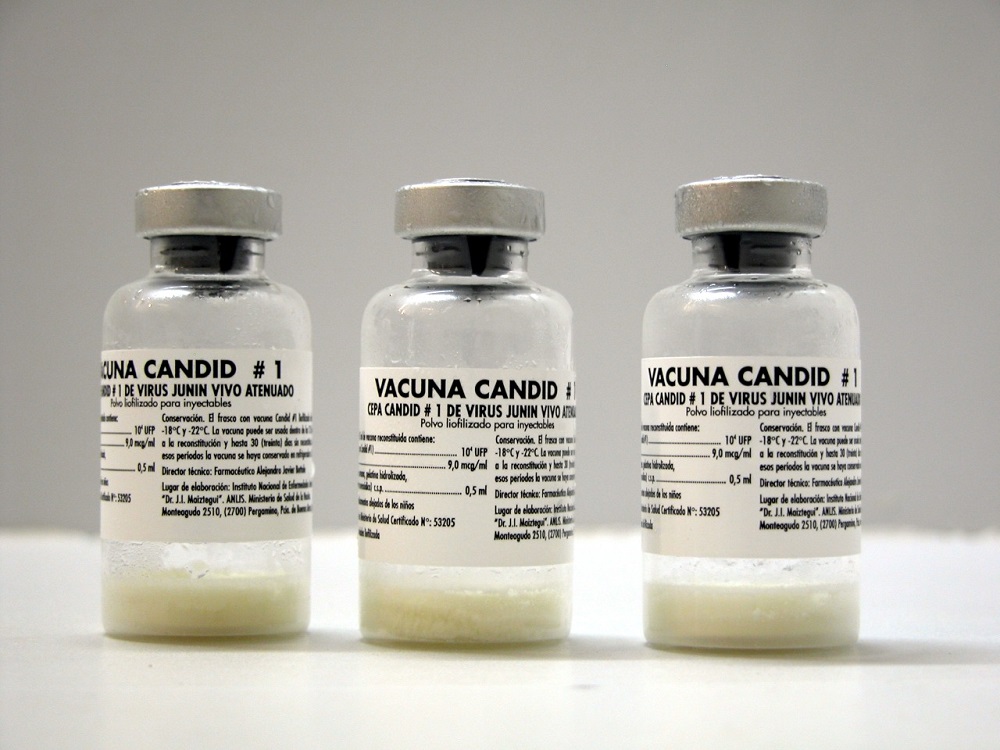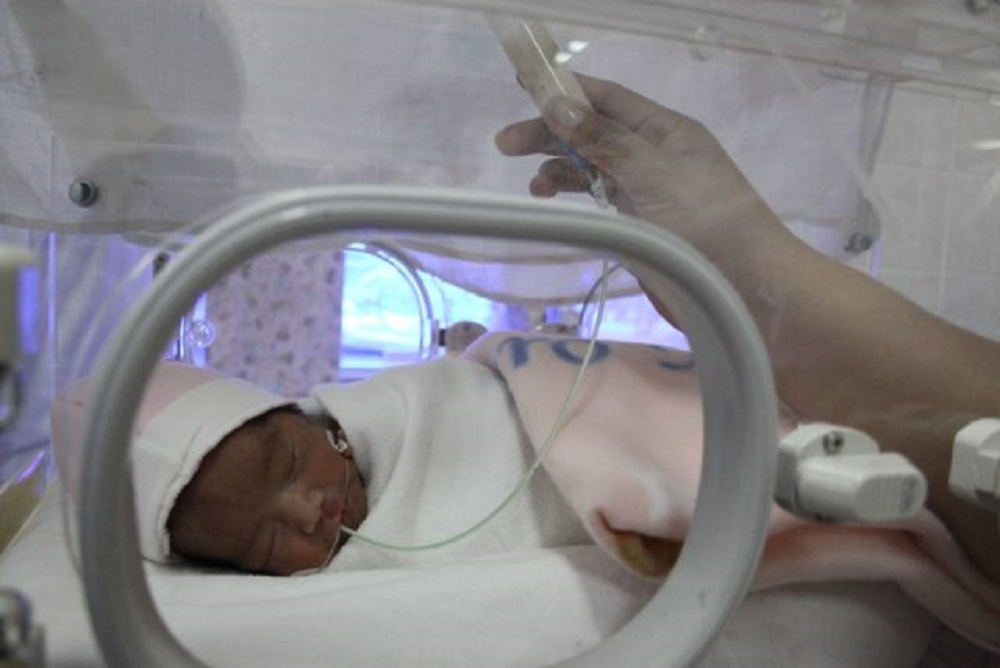RIO DE JANEIRO, BRAZIL – “When my father died of Argentine hemorrhagic fever, I was very young. I was six years old. For the whole family, it was a very hard blow. At that time there was no vaccine,” recalls Juan Sarasola, mayor of the municipality of Casilda, in the Argentinian province of Santa Fe.
“Thanks to Dr. [Julio] Maiztegui and his team, and to this epic story, the vaccine was obtained and thousands of lives were saved in our entire region, in the endemic zone,” he said.

But this year, just when 40 years have elapsed since the development of this vaccine began, its production has been interrupted in Argentina because inflation, and the constant depreciation of the currency, prevent the replacement of three damaged devices -a liquid cooler, a sterility test equipment, and a particle counter – estimated to cost US$267,000 (about R$1.1 billion).
Today there are only 140,000 doses left in the country, insufficient to cover next year’s demand. This vaccine is the only one in the world against the disease, which, although it is exclusive to one zone of Argentina, poses a risk to five million people.
Since 2007, vaccination has been mandatory for people over 15 years of age who live, work or transit through the endemic area or nearby locations.
At the National Institute of Human Viral Research “Dr. Julio I. Maiztegui,” in Pergamino, Province of Buenos Aires, the team is running out of time: if the new equipment for the production of the hemorrhagic fever vaccine arrives, it will take eight months to restart production and three more to deliver the 80,000 doses that, added to the existing 140,000, could be sufficient by 2020, depending on demand.
The problem is that no one knows exactly when the equipment will arrive.
The National Administration of Laboratories and Health Institutes (ANLIS) of Argentina – the public body on which the Pergamino Institute relies – says in writing that the purchase of the equipment is underway: an ANLIS evaluation commission must establish the specific procedures for acquiring the three devices through a public bidding process.
In other words, no one can guarantee that the equipment will be available this year. ANLIS also considers that the stock of doses can cover the 2020 demand.
However, in a joint announcement, the Argentine Society of Vaccinology and Epidemiology, the Argentine Society of Virology and the Argentine Association of Microbiology urged “national health authorities to adopt the required measures to ensure the continuity of vaccine production in Argentina in a timely manner”.
The promise of chloroquine cannot be fulfilled
In Brazil, research into whether chloroquine (a drug used against malaria and autoimmune diseases) can inhibit the replication of the zika virus and some of its sequelae, such as microcephaly, could be paralyzed due to the cuts in thousands of research grants recently announced by laboratories.
Brazil recorded 9,813 cases of zika up to September 30th this year, of which 447 affected pregnant women, according to the Ministry of Health’s epidemiological bulletin. Two deaths were recorded in Paraíba, and there are 1,649 suspected cases of the disease that have not yet been confirmed.
Geneticist Rodrigo Brindeiro, of the Laboratory of Molecular Virology of the Federal University of Rio de Janeiro (UFRJ), who is leading the study of chloroquine, said the drug is already approved for use even in pregnant women and is safe in terms of its toxicity. Therefore, the cost of the study is “hundreds of times lower than investing in new drugs”.
“But if this scenario persists, we will not be able to continue with our studies,” he says. He is referring to the sword of Damocles that hangs over thousands of scientists after the recent announcement by the National Council for Scientific and Technological Development (CNPq) to suspend funding to 84,000 researchers at several levels due to lack of resources. Although CNPq was able to pay for the grants in October, the body remains at risk.
In fact, investment in the science, technology, and innovation sector in Brazil has been in free fall since 2016, and 2019 is the worst year: the Ministry of Science, Technology, Innovation, and Communications has a budget of approximately R$3 billion, a third of what it had in 2010.

The trend across the region
These are only two instances of how budget cuts and low investment in science, technology, and innovation, which spread as a pernicious trend in the region, are hurting not only research but society as a whole, prevented from benefiting from technological innovations for development.
“Although some ignorant cynics could argue that nothing will happen if you stop financing science and technology in our region, the impact of suspending research is huge for societies because we would lose direction and ideas for a brighter future,” says Hebe Vessuri, a social anthropologist who won the 2017 Bernardo Houssay award for her work in Argentinean social sciences.
Vessuri, a visiting professor at the University of the Andes in Bogotá, Colombia, and emeritus researcher at the Venezuelan Institute of Scientific Research, says “public investment in science and technology remains crucial in all countries,” but recalls that if we continue along the path of budget cuts, we will be pulled by “a train that nobody knows where it will take us and we will roll over with any turn or twist in the way”.
Venezuela: lines of research halted in universities
In Venezuela, the possibilities of researching and producing innovations are almost non-existent due to the generalized economic and political crisis. With estimated annual hyperinflation of 135,379 percent at the end of August, after two monetary reconversions eliminating zeros from the currency, and 15 years of exchange controls, universities have no access to dollars to buy reagents or equipment.
In addition, since 2009, public and independent universities have not received research funding. Today, these institutions obtain only enough resources to pay salaries. In many cases, they survive on donations that alumni send from abroad, which remains insufficient for their academic needs.
For instance, the bioterium of the José María Vargas School of Medicine at the Central University of Venezuela, once an elite center for animal husbandry and scientific experimentation, now has no animals. At Simón Bolívar University, the situation is similar: there is a risk of losing the genetic heritage, which is 32 years old.
Biologist Yenis Pérez works there. Her project, a vaccine of recombinant proteins in animals to control parasitic diseases in cattle and horses, is virtually paralyzed. It relies on the availability of reagents and the infrastructure to carry out the trials.
Pérez’s research would help prevent humans from being infected by consuming contaminated meat and milk. That’s because in the past five years Venezuelan cattle have been attacked by parasites, which has reduced production and has been reflected in the poor quality of meat and milk for human consumption.
“We are left with our perseverance as researchers. I work with a group of students who do not give up despite the situation. Even so, it is difficult to progress the lines of research,” she explains.
In December 2006, Nieves Canudas, a professor at the Simón Bolívar University, received a grant of US$1,302,325 (about R$5.2 million) for her project, which won a competition from the Science Mission and the National Fund for Science and Technology. The aim of the work was to develop ointments with substances that could destroy pathogens in the skin of people with burns. With the money, she bought equipment and supplies for the laboratory.
The protocol included the preparation of the compounds, the organic synthesis, and its characterization, as well as photobiological and toxicity tests.
However, the scientist could not pass the stage of conception of the compounds. She had to stop working on the research last year because she could not repair the gas chromatograph and the proton nuclear magnetic resonance device.
“We don’t have the money to complete the project. We needed 90,000 bolivars, but that’s now insufficient for our needs. We couldn’t do the tests in the bioterium either,” says Canudas. The growing hyperinflation has significantly deteriorated the purchasing power of the currency.
In 2017, these 90,000 bolivars were already worth only half the minimum wage (which was equivalent to US$0.99). After a second currency conversion in 2018, which eliminated five zeros, now Canudas could not afford to buy a subway or a bus ticket with that same amount, which cost about 1,000 bolivars.

Brain drain: latent threat
One of the most important technological ventures in Brazil, the fourth generation Sirius particle accelerator, was also affected by budget cuts in science and technology in the country.
The plan was to start activities in 2020 with 13 research stations, but the project will start with only one. The Ministry of Science has invested US$323 million of a total budget that reaches US$440 million (about R$1.7 billion).
Antônio José Roque da Silva, director-general of the National Centre of Energy and Materials Research (CNPEM) and of the Sirius project, explains that although the budget voted in Congress this year was US$62 million, the program has so far received just under 20 percent.
Located in Campinas, São Paulo, Sirius has many applications: from the study of rocks in oil-bearing strata to increase production, to advanced computerized tomography, which can improve the diagnosis of cancer and prepare the ground for new medical therapies.
Planned since 2012, Sirius is a project fully developed in Brazil. And it will probably be the second fourth-generation particle accelerator to operate in the world: the first was Sweden’s MAX IV, inaugurated in 2016. France is building another one, which will start operating in 2021. The United States and Japan are also modernizing their synchronous light sources.
For the physicist and former president of CNPEM Rogério de Cerqueira Leite, Sirius is a great leap forward “not only for Brazilian and Latin American science but worldwide”. “It is an important project for the self-esteem of Brazilian scientists, because we are always late in relation to Europe and the USA, and this project puts Brazil on the same level as the most advanced countries in this area.”.
But he cannot hide his apprehension in relation to the continuous cuts in the sector. “The demand of our researchers for other accelerators in the world was always very high. If we can’t afford to keep these scientists, they will be used worldwide, which will be excellent for them, but not for Brazil”, he says.
“In a scenario of uncertainty, it is difficult to maintain a highly qualified team. In the short term, there is the risk of interrupting the production chain between the research centers and the companies”, cautions José Roque.
And perhaps the recomposition of the budget is not enough to improve the scenario. “If we dismantle what we have, recovering will take 20 or 30 years,” adds Cerqueira Leite.

The underlying facts: lack of knowledge
Gabriela Dutrénit, coordinator of the postgraduate course in Economics, Management and Innovation Policies at the Autonomous Metropolitan University, Xochimilco Unit, Mexico, said that behind all the cuts and the indifference towards science and technological innovation there is a “general lack of knowledge among the population and politicians about the role of scientific research, which we have not been able to convey”.
“We must make society see the benefits it gets from research. And to make politicians understand that, even in economic terms, it is not convenient to reduce investments in scientific and technological development, because of the consequences that this has for society,” says Dutrénit.
And she continues: “They have to see that the consequence [for society] will not be overnight: if I reduce the investment by one dollar, I will not see [the effects] immediately. But in the medium term, I will. Because whoever was doing certain research can no longer continue, and something that could be beneficial for the affected population will take longer to generate the knowledge that translates into new techniques”.
In turn, Hebe Vessuri notes that “our countries”, in their great majority, already have installed science and technology capabilities. “It is a very different situation from half a century ago. These capabilities should be used in much more creative ways,” she says.
“Unfortunately, what we see as part of the self-imposed process of deterioration on the part of our officials and politicians is the serious risk of dismantling the capabilities built with so much effort,” she adds.
She believes that scientists “have not been able to find a way to make politicians and entrepreneurs understand the great potential they have for their countries”. The ruling class has not been able to harness them either”, she says.
And corruption
And perhaps this ignorance is one of the factors that lead certain employees and bureaucrats to divert funds for technological equipment and innovation development to other purposes when there are few resources.
This is the case in Peru, where several public funding programs for the development of technological innovations are fulfilling their mission, but the population does not even have access to longstanding technologies, such as the use of incubators, monitors and infusion pumps for premature babies, as Health Minister Zulema Tomás conceded before the National Congress on September 4th.
Thus, in the Lambayeque Regional Hospital (north of the country) 30 babies died in the first quarter of 2019 “for lack of budget to repair and buy more incubators,” said hospital sources. But the Office of the Comptroller General proved that one million soles (about R$1.2 million) had been used, half the budget for neonatal care, to buy Christmas baskets for the staff.
In the midst of this disheartening scenario, there are voices proclaiming the interruption of public investment in science and technology. For Gabriela Dutrénit, however, “this is not the time”. “I don’t believe that private investment can cover [public investment] in our countries,” she says.

She recalls that Latin American countries still have many scientific and technological capabilities to build. “We haven’t yet reached the critical masses needed to acquire our own dynamics,” which is why the state “can’t help but accept the need for strong public investment in science and technology”.
And she concludes: “We still need public investment, not only for leadership but to target the areas where investment is lacking, in order to contribute to economic development and social well-being, because private companies will be guided by profitability criteria”.

